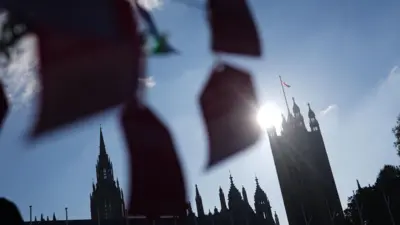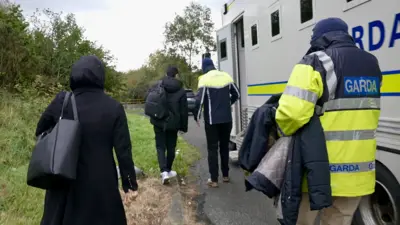We've updated our Privacy and Cookies Policy
We've made some important changes to our Privacy and Cookies Policy and we want you to know what this means for you and your data.
What are the wind power issues?
Top Stories
- Author, Iolo ap Dafydd
- Role, ҙуПуҙ«ГҪ Wales Environment Correspondent
There is always some local opposition to wind farms, especially in areas of great beauty and if local businesses and tourism may be affected.
Lots of views are continually being aired on efficiency of wind turbines as well.
Currently in Powys there are over 20 applications for new wind farms - at least half dozen are under Powys Council and Welsh government authority.
The rest are much bigger and so come under the UK's Department of Energy and Climate Change in London.
Top Stories
Both UK and Welsh governments have renewable energy targets - because as the UK closes coal power stations to reduce harmful emissions, new sources of power for our electricity consumption have to be invested in.
Wind power is seen to be the most mature and is a heavily invested-in form of green energy.
Wave, tidal, solar power and even nuclear is still far behind in terms of planning and operating.
Top Stories
'Welsh jurisdiction'
Three of the Welsh governments Tan 8 areas - the six-year old policy to encourage wind farm developers to bid for planning turbines in seven strategic areas of Wales - are in Powys.
As more turbines are approved, the National Grid is legally obliged to extend the power infrastructure - and that's why there are plans for pylons and a sub-station to be built in Powys so that the power generated by wind farms is taken to the rest of the country.
The grid's consultation on Powys ends on Monday.
Jurisdiction on energy output under 50MW is decided in Wales, all above that by the Department of Energy and Climate Change (DECC).
First Minister Carwyn Jones wants authority for energy projects up to 100MW to be devolved.
That means Powys council will decide planning on the 19 acre electricity sub station which the National Grid wants to build, but the power lines are to be decided by the IPC - the Infrastructure Planning Commission - set up by the previous Labour government to fast-track and speed up planning on nationally important projects. Nationally for the UK, not just Wales.
But the policy to set aside seven areas for turbine development belongs firmly to the Welsh government.
Which is why many were surprised to hear the first minister say he is concerned that the benefits of wind farms is being exported out of Wales, and that local feelings may be over ridden with whatever the UK authorities says.
That has always been the case, and why protesters want the TAN 8 policy to be reviewed.
Local reservations
It will be interesting to see if this request for more powers on energy will be made formally, as the Welsh Government say they have done in the past, although one DECC official has told me, there is no official record of these requests.
The Welsh Government now senses strong feelings in Powys, and is obviously keen to engage more with that opposition. It may also see a chance for a political fight with the coalition government in London.
It could then blame Westminster for "imposing" more turbines and pylons on Wales, despite local reservations.
Later this month, Powys Council is to hold a meeting in Welshpool, as it has many concerns regarding transport and planning for wind farms, and has also asked the Welsh government to review the TAN 8 policy.
Whatever happens with devolution for energy projects up to a 100MW as Carwyn Jones would like, it seems clear that TAN 8 underestimated the technological advances in wind energy, and did not include road infrastructure in terms of how steel towers and huge rotary blades could navigate narrow country roads, to where wind farms are being built in rural Wales.
Top Stories
More to explore
Most read
Content is not available








